|

|
The Advantage:
Most people are generally reasonable and can rally around an idea that wasn’t their own as long as they know they’ve had a chance to weigh in.
|
49 |
|
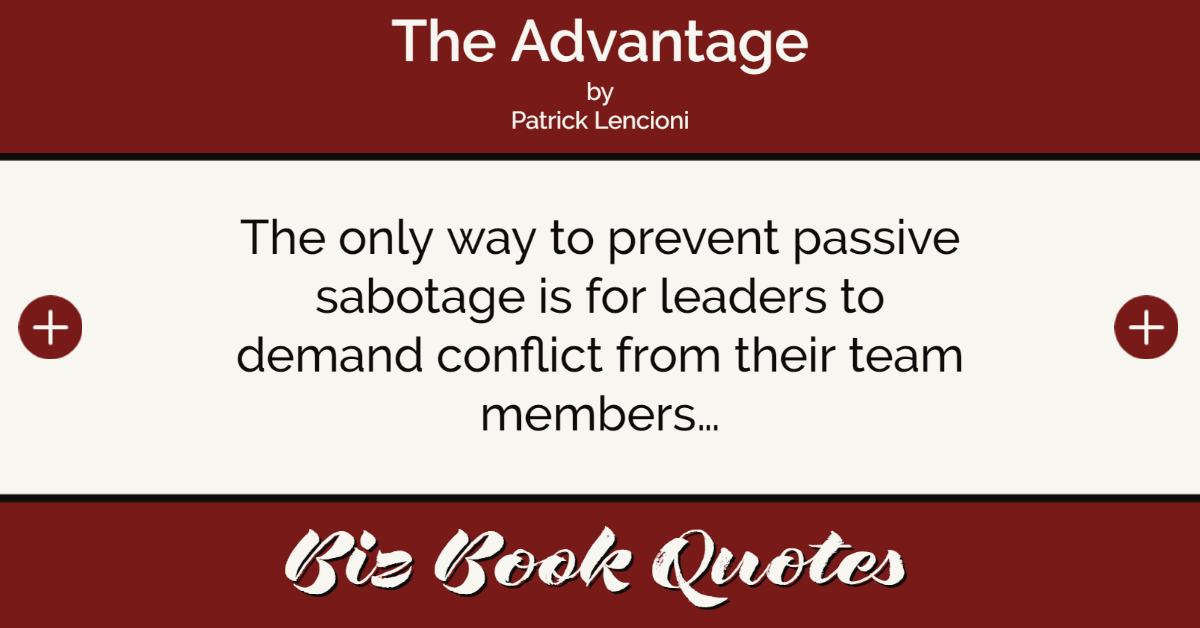
|
The Advantage:
The only way to prevent passive sabotage is for leaders to demand conflict from their team members…
|
51 |
|
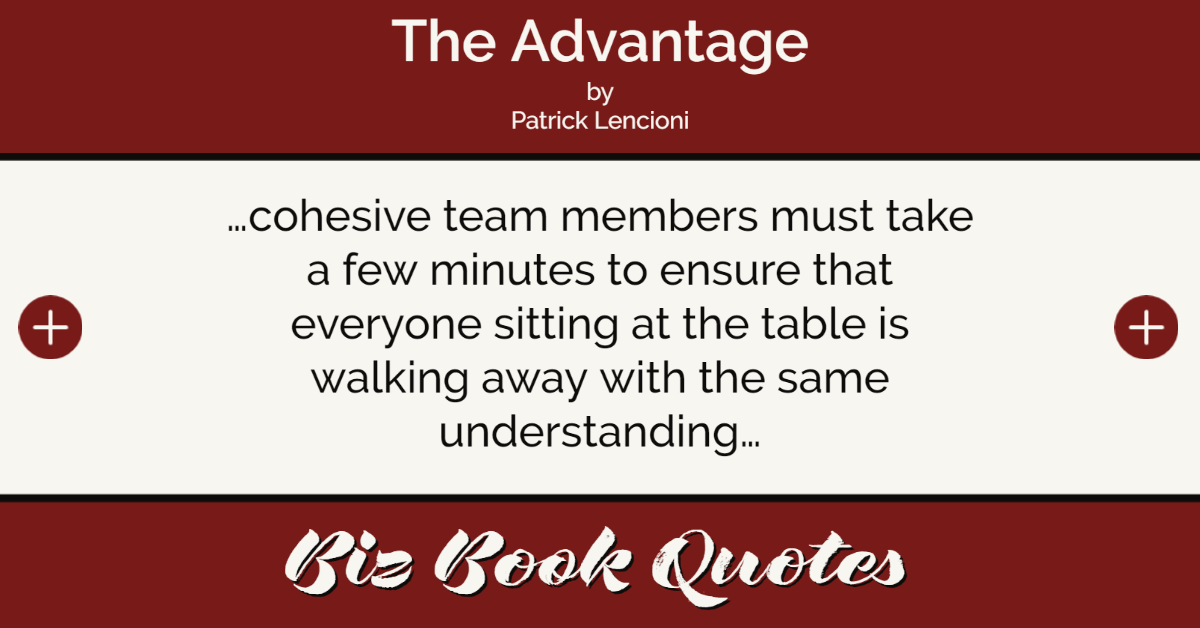
|
The Advantage:
…cohesive team members must take a few minutes to ensure that everyone sitting at the table is walking away with the same understanding…
|
51 |
|

|
The Advantage:
Peer-to-peer accountability is the primary and most effective source of accountability on a leadership team.
|
54 |
|

|
The Advantage:
The leader of the team, though not the primary source of accountability, will always be the ultimate arbiter of it.
|
56 |
|

|
The Advantage:
To hold someone accountable is to care about them enough to risk having them blame you for pointing out their deficiencies.
|
57 |
|

|
The Advantage:
Unfortunately, it is far more natural, and common, for leaders to avoid holding people accountable.
|
57 |
|
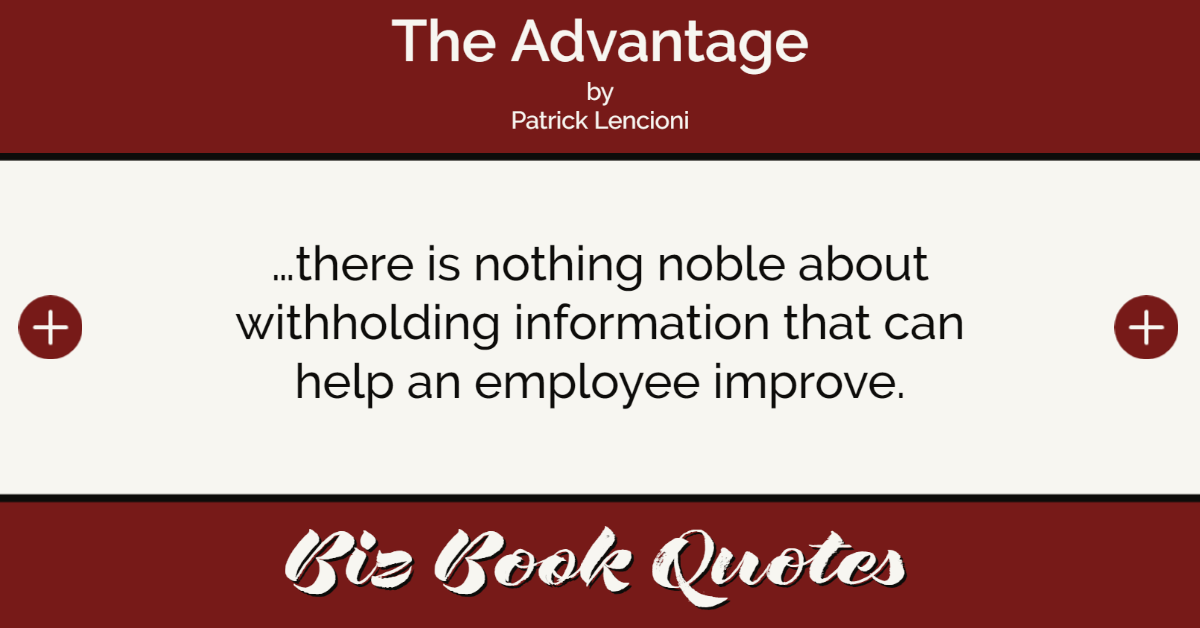
|
The Advantage:
…there is nothing noble about withholding information that can help an employee improve.
|
59 |
|
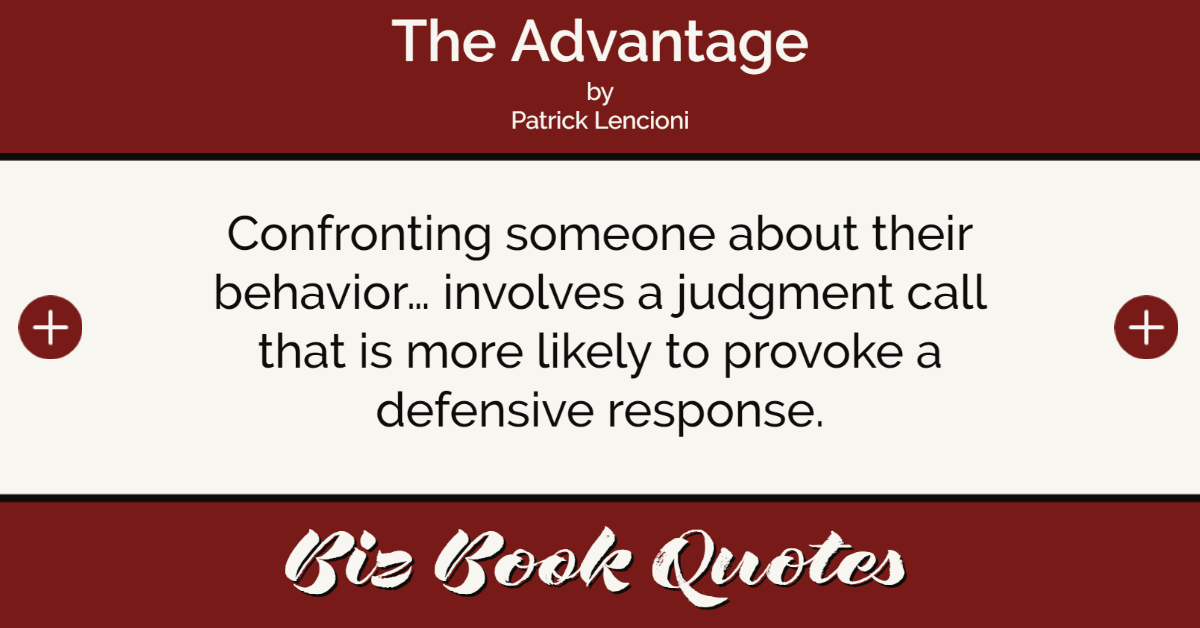
|
The Advantage:
Confronting someone about their behavior… involves a judgment call that is more likely to provoke a defensive response.
|
59 |
|
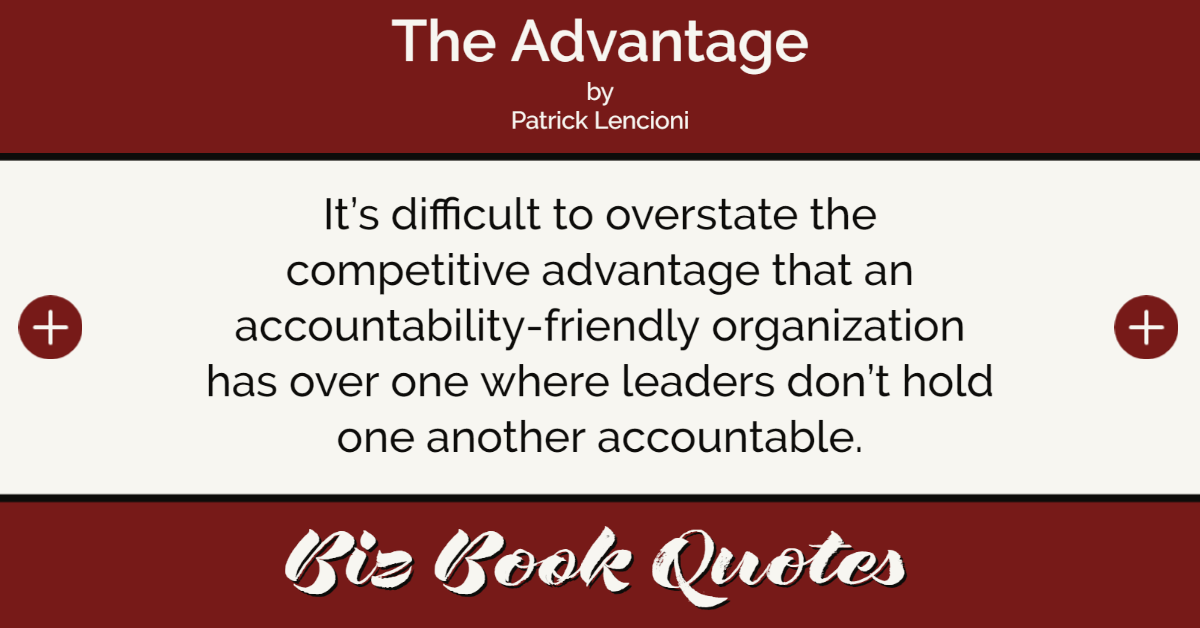
|
The Advantage:
It’s difficult to overstate the competitive advantage that an accountability-friendly organization has over one where leaders don’t hold one another accountable.
|
60 |











